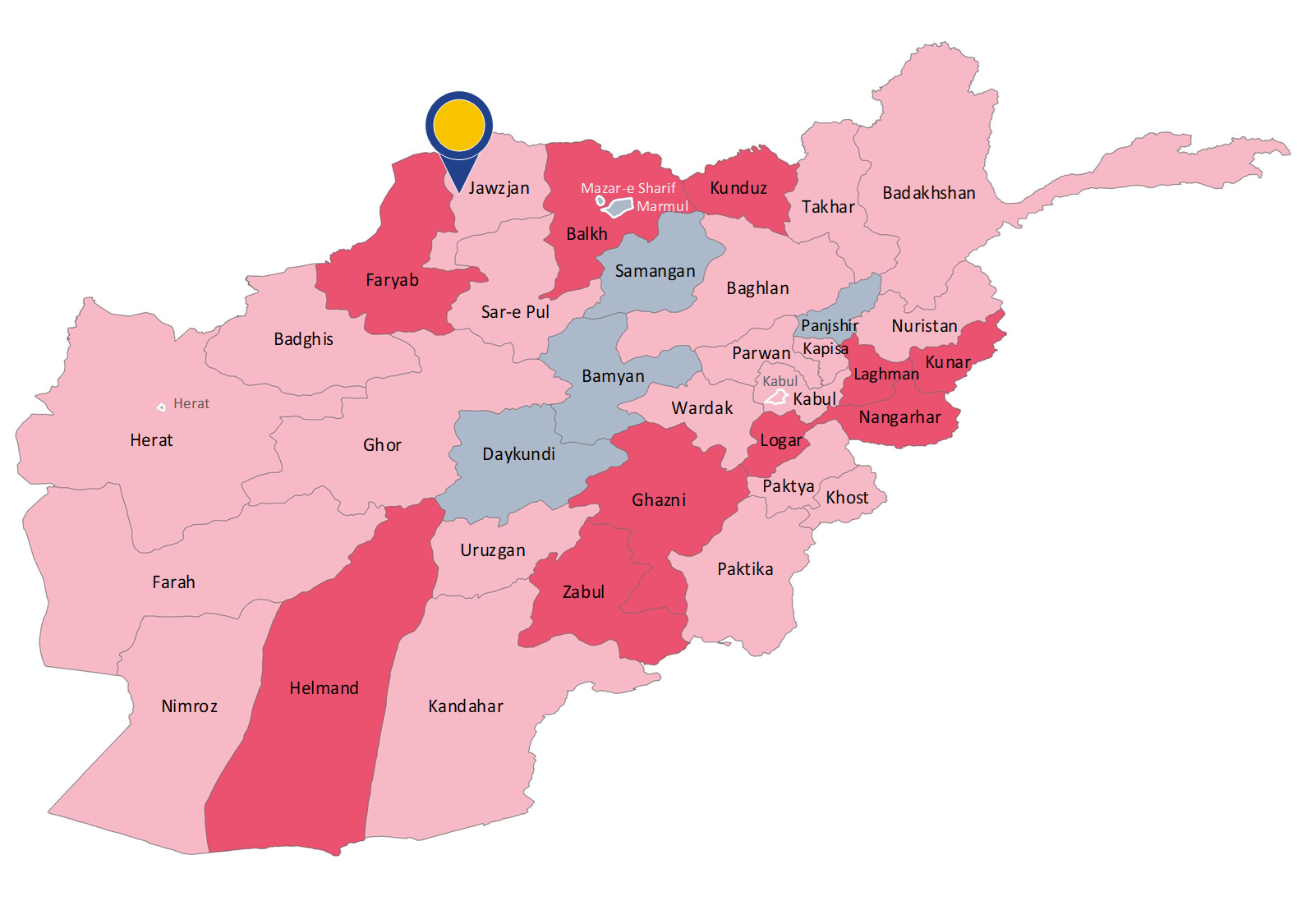|
⚠ |
|
Please note that this country guidance document has been replaced by a more recent one. The latest versions of country guidance documents are available at /country-guidance. |
Jawzjan has a population of approximately 602 000 and is situated in the north of Afghanistan. The main ethnic groups in the province are Uzbek and Turkmen. It borders Balkh, Sar-e Pul, and Faryab, as well as Turkmenistan. The province is divided in 11 districts. The Ring Road connects the provincial capital of Jawzjan, Shiberghan, with the major population centre Mazar-e Sharif in Balkh, as well as Faryab to the west. Another main road connects the neighbouring Sar-e Pul to the Ring Road in Shiberghan. The road between Mazar-e Sharif and the provincial capital Shiberghan remained contested in January 2020.

The Taliban, including AGEs under their leadership, and Central Asian groups have a widespread presence in Jawzjan province. The Islamic Movement of Uzbekistan also operates in the province, where it maintains links to splinter groups. No security incidents specifically attributed to ISKP were recorded, although there were reports of an insider attack, claiming that the attackers were former members of groups affiliated with ISKP.
According to LWJ, five districts were contested; three districts were categorised as under government control, and three districts were categorised as under Taliban control.
ACLED collected data on 244 violent incidents in the period from 1 March 2019 to 30 June 2020 (average of 3.5 incidents per week), of which 180 were coded as ‘battles’, 58 as ‘explosions/remote violence’, and six as ‘violence against civilians’.
Most of the violent incidents in the province have been armed clashes, with the majority of attacks by the Taliban on Afghan security forces, including PGMs or local uprising forces, or attacks on their facilities, such as checkpoints, headquarters and military bases. The Taliban attacked some district centres, and some of the attacks resulted in hour-long clashes. AGEs also used roadside bombs or IEDs to target security forces. Operations, attacks and airstrikes were carried out by Afghan security forces. At times, these incidents resulted in civilian casualties. Violence against civilians included killings by AGEs, arson in several shops and schools by AGEs, and an abduction of elderly civilians. Electoral violence and increased road insecurity were also reported.
Further impact on the civilian population included, for example, taxing of commercial and logistic vehicles by AGEs due to their control of the road between Mazar-e Sharif and the provincial capital Shiberghan. Furthermore, the Taliban attacked the district hospital in Aqcha district and set fire to telecom towers in Drazab.
UNAMA documented 123 civilian casualties (29 deaths and 94 injured) in 2019, representing 20 civilian victims per 100 000 inhabitants. This was a decrease of 33 % compared to 2018. Leading causes for the civilian casualties were ground engagements, followed by explosive remnants of war and non-suicide IEDs.
RS ranked Jawzjan in the category of provinces where the number of civilian casualties was between 26 and 50 for the first quarter of 2020, and between 0 and 25 for the second quarter.
In the period 1 March 2019 – 30 June 2020, 4 186 persons were displaced from the province of Jawzjan, of whom more than 67 % were displaced within the province itself. In the same period, Jawzjan hosted a large group of IDPs from Faryab province.
|
|
Looking at the indicators, it can be concluded that indiscriminate violence is taking place in the province of Jawzjan, however not at a high level and, accordingly, a higher level of individual elements is required in order to show substantial grounds for believing that a civilian, returned to the territory, would face a real risk of serious harm within the meaning of Article 15(c) QD.
|
